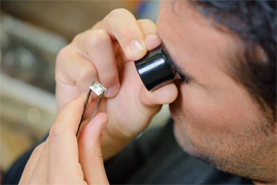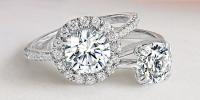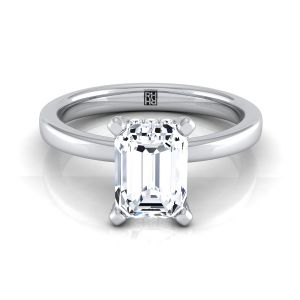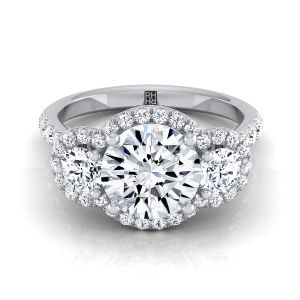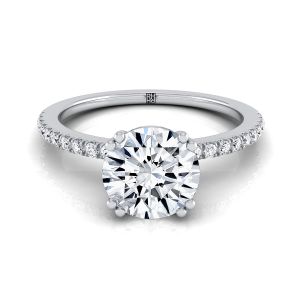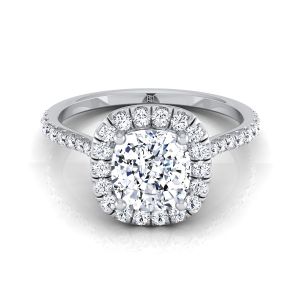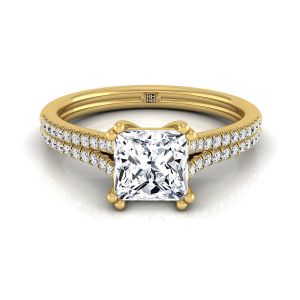Which is more ethical: natural diamonds have been mined from the earth or lab-grown diamonds that have been created by man? If you’ve seen any advertising from the new lab-grown diamond brands that have popped up in the past few years, you might think you know the answer to that question.
But are lab grown diamonds really better for the earth or for us?Whether these products are called “lab grown diamonds,” “created diamonds,” “cultured diamonds,” “grown diamonds,” “synthetic diamonds,” “man-made diamonds,” or “cultivated diamonds,” understanding more about the manufacturing process and the differences between mining and manufacturing may change your opinions on which option is right for you.
Before you make a decision, there here are eight surprising facts about diamonds and lab-grown diamonds that you need to know.
1. It Takes a Lot of Energy to Grow Diamonds
The claim that man-made diamonds are better for the environment leaves out one important fact: making diamonds requires a lots of energy. The presses and reactors that are used to manufacture created diamonds operate at a very high heat and pressure for very long periods of time while the synthetic diamond crystalizes.
The environmental impact of that energy use depends on how the energy is produced. So it’s not enough to know that a diamond is lab-grown to know if it’s better for the environment. If environmental impact is why you are considering a lab-grown diamond, you need to ask questions about how the diamond was grown.
If a lab-grown diamond is produced using renewable energy, it’s much better for the environment than if it’s produced using energy from fossil fuels. Some producers also offset their energy use by purchasing carbon credits.
At RockHer we source our
lab-grown diamonds from producers who have pledged that they will be carbon neutral by 2022.
2. Most Lab Grown Diamonds Aren’t “Eco-Friendly”
In addition to the environmental cost of the energy it takes to manufacture diamonds, the raw materials used are mined, as are the metals used to make the machinery, and the chemical catalysts used during the process.
According to Dr Saleem H. Ali of the University of Delaware, a definitive
study that compares the ecological impact of man-made and mined diamonds is not currently possible, due to the lack of data on the raw materials used in the lab-grown diamond manufacturing process.
Compared to most of the mining industry, diamond mining has a relatively small environmental footprint and no chemicals are used. According to the Diamond Producers Association, the carbon footprint of a 1 carat polished, natural diamond is smaller than that of most CVD synthetic diamonds of similar size.
But even if lab-grown diamonds do have less environmental impact than mined diamonds, they can’t legally be called “eco friendly.” According to the Federal Trade Commission
Green Guides, comparative claims are not enough to justify environmental benefits. Lab-grown producers can’t say that their product is good because another product is less good: they need to document actual benefits to the environment that they are creating.
If a retailer tells you that lab-grown diamonds are “environmentally friendly” you know one thing for sure: they are stretching the truth about at least one thing!
At RockHer, we’re happy to sell you a beautiful
lab-grown diamond without making any misleading claims.
LINK TO STUDY
https://ideas.repec.org/a/kap/jbioec/v19y2017i1d10.1007_s10818-016-9241-8.html
Green Guides: https://www.ftc.gov/news-events/media-resources/truth-advertising/green-guides

3. Switching Away From Mined to Lab-Grown Diamonds Puts Millions of Jobs at Risk
The diamond sector provides a livelihood for 10 million people globally, including 1.5 million artisanal and small-scale miners and their families in Africa and South America, who uncover 15% of the world’s diamonds. Diamond mining contributes approximately $7.6 billion per year to Africa. Botswana, which has risen out of poverty, has become a showcase of democracy and development thanks to diamonds, which account for 71% of export revenue, 16% of government revenue and 16% of the gross domestic product.
Mining is a major source of employment in many developing nations around the world without very many other options for employment. Social responsibility is as important ethically as environmental responsibility.
In contrast, manufacturing synthetic diamonds doesn’t generate very many jobs or fuel economic development. The new De Beers sponsored lab-grown diamond brand Lightbox plans to open a
60,000-square-foot diamond factory in Oregon this year. It will produce 500,000 rough carats of lab-grown diamonds a year but will employ only 60 people.
But the employment from mining or manufacturing diamonds is just one part of the picture for your engagement ring. But natural and lab grown diamonds are cut and polished in exactly the same way buy about a million cutters around the world.
At RockHer we can trace our natural diamonds at each step from mine to our hands. We are one of the first retailers in the country to offer
transparent diamond sourcing.
Manufacturing jewelry also employs many people around the world, many in large factories in developing countries.
At RockHer, we make all our jewelry to order at our Los Angeles studio, providing employment for dozens of skilled craftspeople in California. We’re proud to be a great place to work. When you think about your engagement ring, think about every step in its journey, not just the first step.
4. Lab-Grown Diamonds May Have Been Treated to Improve Color
After created diamonds are grown, they are often treated to improve the way they look. They are most often irradiated or heated under pressure to improve color or create fancy colors.If they were natural diamonds, those treatments would make them much less valuable. Any treatment in a natural diamond would have to be disclosed to you on the invoice and on any grading report. But lab-grown diamond producers don’t say anything about treatment, so you have no way of knowing whether a man-made diamond has been subjected to any treatment.
If you want to know all the details about your lab-grown diamond, we recommend purchasing a
GIA-certified lab grown diamond. GIA lab grown grading reports include includes details about how a diamond was produced and any post growth treatment.
5. Lab-Grown Diamond Prices Have Dropped (And Will Probably Drop More)
Lab grown diamonds are a relatively new product without a long track record. But since they have been introduced, prices have continued to decrease with improved equipment and increased competition. A recent
report by Bain & Co says that prices for man-made diamonds have declined 70% in the past two years.
Most people in the industry expect that the value of these manufactured products will continue to decrease over time. While that might not matter if you are buying a fun necklace, it might be a bit more disappointing if you are buying a once-in-a-lifetime engagement ring.
Most analysts agree that natural diamond production has peaked and natural diamonds will become increasingly rare in the future. Scarceness and increased demand from rapidly growing markets like China and India make it likely that prices for natural diamonds will continue to increase.
That means that you should choose a lab-grown diamond as an adornment, not an investment. But isn’t that true of most luxury items we buy? Are you really planning to sell a designer jacket or handbag?
Bain & Co: https://www.bain.com/insights/global-diamond-industry-report-2018/
6. Some “Man-Made Diamonds” Aren’t Even Diamonds
When you search for lab grown diamonds on Google, you’ll find a lot of results that link to brands like
Diamond Nexus and
Charles & Colvard who aren’t selling lab-grown diamonds at all, they are selling imitation diamonds, also known as diamond simulants.
Hey, there’s nothing wrong with simulants like cubic zirconia, diamond coated cubic zirconia, and moissanite when they are identified properly. But they certainly aren’t diamonds and FTC rules specifically prohibit marketing them as man-made diamonds or implying that they are the same as diamonds. Despite that fact, many vendors continue to skirt the rules and intentionally confuse customers.
Before you consider a lab-grown purchase, you must carefully read the language to make sure that what they are selling is actually man-made diamond, not an imitation.
Diamond Nexus https://www.diamondnexus.com/pure-carbon-man-made-diamonds.html
Charles & Colvard https://www.charlesandcolvard.com
7. There is No Established Resale Market for Lab-Grown Diamonds
The better quality your natural diamond, the more of its value it retains. Why? Truly fine diamonds are rare and always in demand. Does your family have any diamonds that have been passed down for generations?Diamonds last centuries and never lose value.
But the resale market for lab-grown diamonds is not yet established. With prices currently volatile, your lab grown diamond may sell for less than you paid for it next year. If production increases dramatically, maybe a lot less.
And what about passing down that diamond?Will your kids look at it as a precious gem that was ahead of its time or inexpensive costume jewelry like we look at CZ today?No one really knows.But we do know that the earth isn’t making more diamonds.
8. Lab-Grown Diamonds Cost Less Than Natural Diamonds
Although lab-grown diamonds may not hold value as the years go by, one thing is sure: lab grown diamonds cost less than natural diamonds. Depending on the size and quality they can be 40% less.That means you can afford a better quality lab-grown diamond or a bigger lab-grown diamond, or both. If you have researched diamonds and discovered you can’t afford the quality and carat size you want, lab-grown diamonds offer you another option to get the engagement ring you really want.
You may be surprised at the beautiful
lab-grown diamond engagement ring you can afford. Here are our most popular
lab-grown diamond rings under $2000. They sparkle just as beautifully as our natural diamond rings and they are crafted to the same
exacting quality standards.












